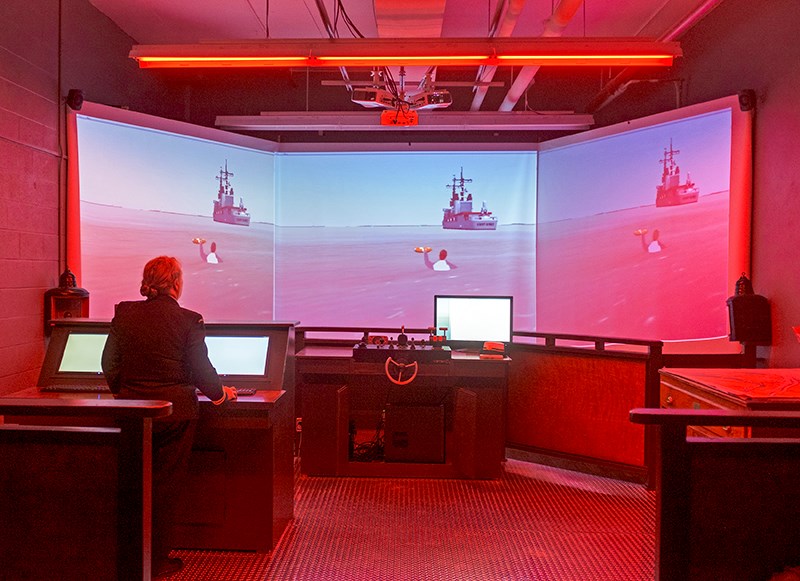Troy Shantz
New technology is allowing Sarnia’s Sea Cadets to get their feet wet without leaving dry land.
The multi-console naval simulator mimics the bridge of a ship and shows cadets what it’s like to navigate on any ocean and lake in the world.
“There’s 60 or 70 different ships in the program —anything from freighters down to dinghies,” said Carol Weston, an officer with the program.
The simulator is in the Sea Cadets classroom in the basement of the downtown federal building at Front and Davis streets, which is also home to offices of Fisheries and Oceans Canada and Canada Post.
Walking into the basement is more like boarding a marine vessel. On any given Tuesday, there’s a flurry of activity with youth in pressed uniforms marching about, focused on tasks and responding to orders shouted from more senior members.
Entering the simulator, you’re greeted by a trio of eight-foot screens at one end of the room, with the layout of a ship’s bridge in front of it.
Seven stations are available for ‘look-outs,’ or ‘helmsmen.’ Cadets gaze into the screens and check radar readings. But it’s not all digital - one cadet is tasked with reading maps the old-fashioned way.
“Everyone starts as a lookout… then they go through the different phases,” said Weston. “It’s an excellent course for cadets that are interested in going into water-related careers.”
Instructors control the different scenarios, from a man going overboard to sailing in bad weather. Speakers and subwoofers carry the sound of an actual ship, loud enough to vibrate the floor for a realistic experience.
“The woofer of the sound system actually gives you that little bit of vibration on the deck,” said Weston. “If you’re going through waves, you can actually get a sea-sick motion.”
This isn’t a typical video game: the software alone costs $20,000.
The simulator is only part of the comprehensive program, Weston explained. But anything that’s taught is never far removed from life in the Navy.
“We don’t call this a building, we call it a ship. We use all ship terms, ”said Weston.
“‘Go to the heads and empty the bilge,’ means ‘Go to the bathroom,’” she added with a laugh.
The Sea Cadet program is available to students ages 12 to 19, and is completely free. About 50 members attend weekly programs to learn the workings of the Canadian Navy, including navigation, sailing, athletics, marksmanship and even music.
“We teach them little things, discipline, how to get along, teamwork,” said Weston. The program doesn’t recruit for the Navy but it certainly helps if that’s where members want to end up.
